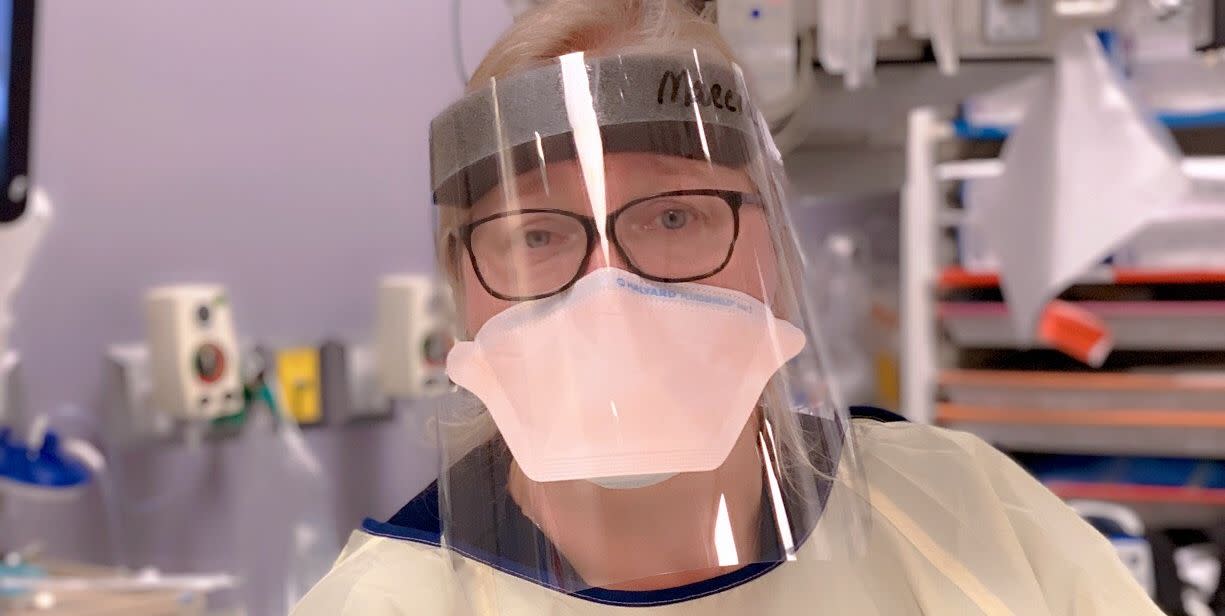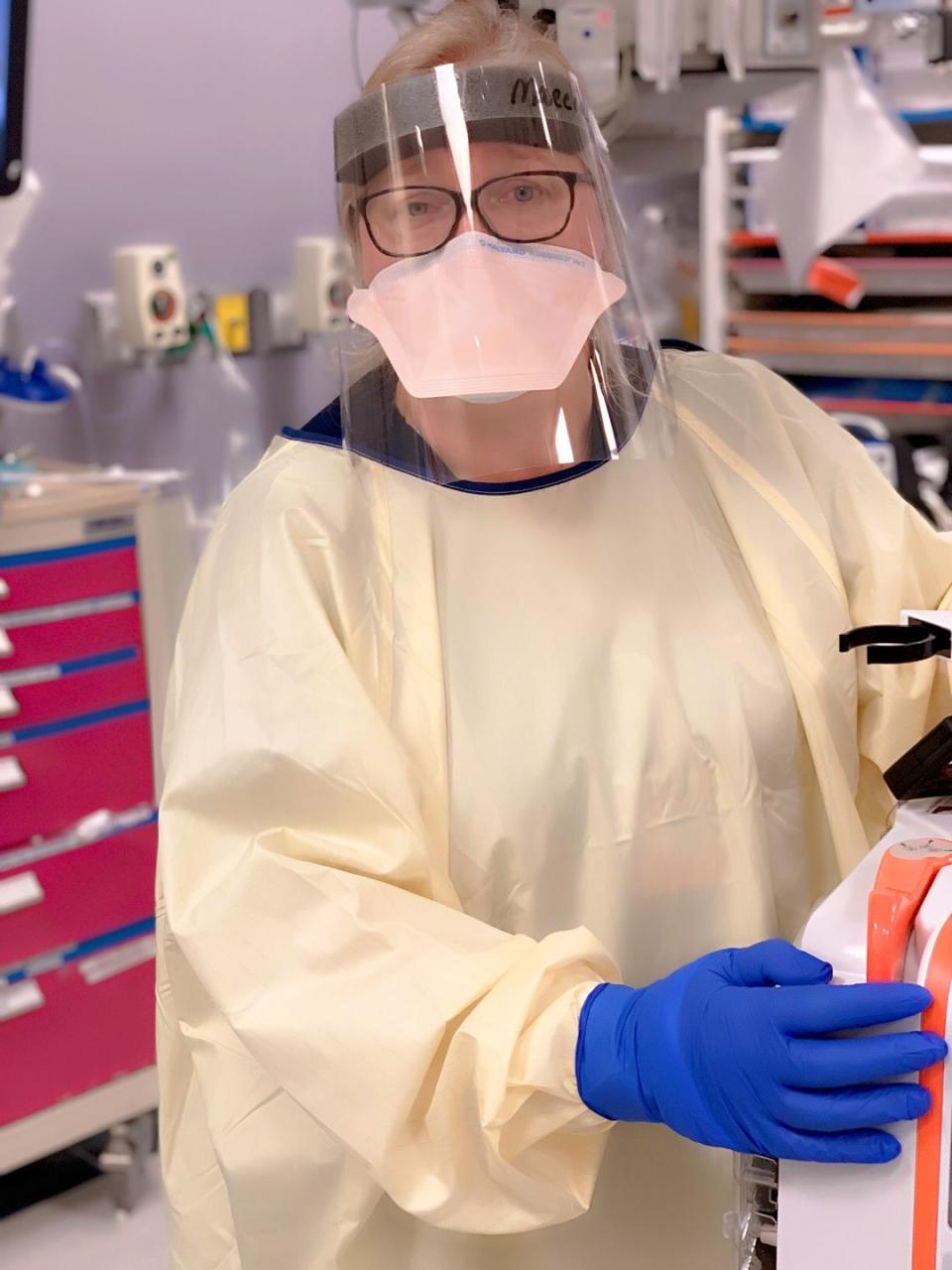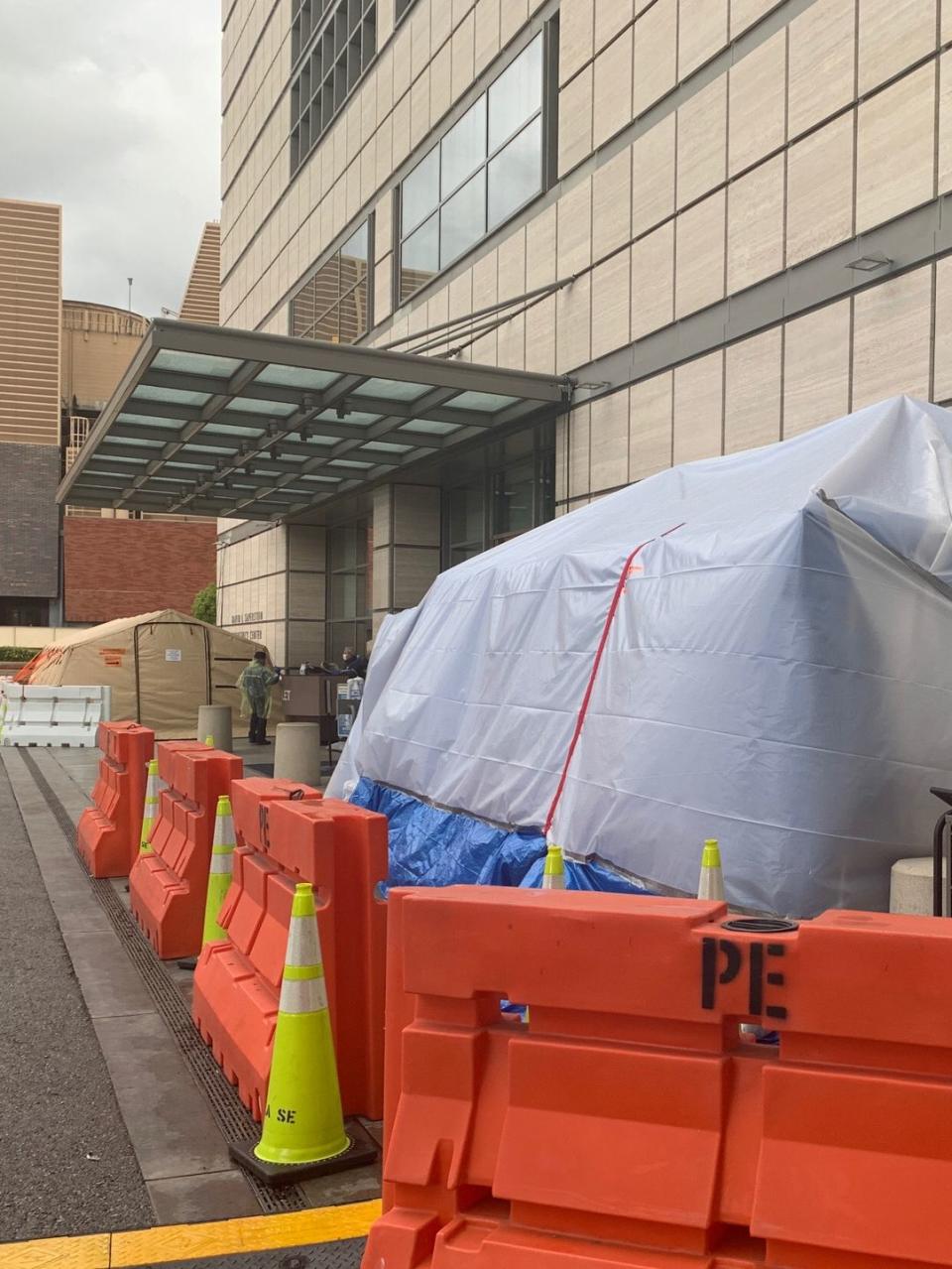'I'm An ER Nurse And We're Setting Up Tents To Deal With The Potential Influx Of Patients'

I’m a 58-year-old emergency room nurse, and I've done this job for 34 years. I’ve spent the past 32 years of my career in the emergency medicine department at UCLA Health in Los Angeles, a world-renowned medical center in the most populous city in California.
So far, my state has over 330 confirmed novel coronavirus patients and six deaths, and thousands more are being monitored for the virus and in quarantine. In L.A. county, we have 69 confirmed cases and one death.
As you can imagine, we are very busy at the ER, and we could be significantly impacted by the COVID-19 pandemic.
Before the novel coronavirus outbreak in this area, we were already really busy at the ER. UCLA is home to a state-of-the-art transplant center, trauma center, stroke center, and pediatric center, among many others, and it’s also one of the only psychiatric hospitals in the area. At the ER, we see so many patients who require attention for all sorts of health issues that fall into any of the above categories, at any given time.
As such, we have a large community of vulnerable patients—like cancer patients going through chemotherapy and transplant patients who are chronically immunocompromised—who are at a much higher risk of catching the novel coronavirus if they’re exposed to it, compared to the average healthy person. Now add COVID-19 to the mix.
When you have an outbreak like this, ER visits are going to go up initially because people who feel sick and/or have symptoms (a cough, sore throat, for instance) often think they’re infected. But this poses a real problem for us because we have to take the time to do a thorough screening to determine if a patient might be sick with COVID-19 (or another contagious illness, even the flu). Then, we have to figure out where to isolate them if we consider them a risk. If there are no rooms available, they’re placed in the waiting room. While they will be instructed to wear a mask in the hospital setting, being in close proximity (like sitting shoulder-to-shoulder in a waiting room) is a major factor in the spread of viruses like COVID-19.
We haven’t had any known positive COVID-19 patients at our ER yet, but we’ve ruled out several potential cases.
At the time of this interview, if we have a very high-risk patient (meaning someone who has a cough and fever and recently visited a high-risk area) who needs to be tested for COVID-19, we’ll call the Centers for Disease Control and Prevention (CDC) to ask for permission to test. After that, their sample is sent off—and it takes another four to five days for results to come back. (These protocols can change as we get new information.)
Because of this long turnaround time, people who *might* have COVID-19 could end up taking up valuable real estate in the hospital when they wouldn’t need to if we had the proper testing supplies on site. All we can do for the time being is keep at-risk patients quarantined while we wait for results in one of our four negative pressure rooms, which are designed to prevent airborne contaminants from drifting to other areas where they could reach other patients, staff, and medical equipment, given that novel coronavirus seems to spread via respiratory droplets (although we could still learn new information about other ways that it spreads).

We’ve been told by the government that millions of test kits are on their way, but I’m admittedly skeptical as to when we’ll actually see them. My suspicion is that once we have the ability to test for the novel coronavirus, we’ll see more and more cases pop up throughout the nation.
Given our current reality, the last place you should be going right now is your ER, at least right now, while hospitals work with limited resources. There are likely no (or very limited) test kits available, and there’s no cure or magic bullet for the novel coronavirus at this point. If you’re having trouble breathing, by all means, come in. But if possible, call first and let us know so we can prepare for your arrival.
Within the past couple weeks, the team at UCLA Health took novel coronavirus prep to another level.
While our office of emerging infections had been monitoring COVID-19 since December, we decided to move forward and set up a command center in our hospital after our governor declared a state of emergency in California. This allows our various departments to meet and share the latest information coming in from the CDC and World Health Organization (WHO).
We also sat down with our ER team and came up with a plan for how to deal if and when more people begin to come in with symptoms of COVID-19. We practiced running drills and drawing up a rough draft of the process depending on different scenarios. For example, together we brainstormed how we would respond to a slow trickle of suspected COVID-19 patients (one to two at a time), and then what we would do if we suddenly had more (like five to six at a time...or more). In that more extreme scenario, we had to figure out how we’d redirect traffic and tweak other protocols and regulations accordingly. We are learning and adapting day by day.
We also set up tents just outside the ER doors. As of right now, we have a few pop-up tents, and as every person comes in through that door, they’re greeted by a nurse who asks why they’re coming in. If we suspect you might have symptoms of COVID-19 or the flu, we’ll provide you with a mask to wear and then ask that you sit in the tent or your car. The key is to quarantine people in order to reduce viral spread as much as we can.

Then, if you have a compromised immune system or you’re having trouble breathing, we’ll admit you into our care and continue to monitor you. Otherwise, we’ll send you home. We have no test kits available—and therefore no way of knowing if you actually have COVID-19. In the meantime, all you can do is stay away from other people (especially the elderly!) and watch your symptoms.
In order to reduce the spread of this virus, we’ve also changed how we deal with the end of our shifts at the ER. Our administration has told us to go home and launder our uniforms right away, but as nurses, we’ve taken these guidelines one step further. Before we leave the hospital, we put our uniforms and shoes in a bag and change into a different set of clothes and shoes. Nurses are human—we make mistakes. We stop at the store on the way home, brush up against strangers without intending to, and hug our family members. Knowing this, we want to make sure we’re protecting others as much as possible by keeping our hospital clothes away from the outside world, given that we come in contact with sick individuals all day.
I’m also concerned about the well-being of nurses (and the other medical professionals on the front lines) because we often have a superhero mentality.
As a nurse, I often think I'm tough enough, and nothing’s going to happen to me. Bring it on! I’ll take care of it! Is this a good way to think all the time? No. Because every once in a while, we get bitten by the bad thing. And if we adapt a hero attitude or are careless, we’ll have a staffing crisis. This is exactly why hospital administrators need to provide the highest form of protection and enforce compliance.
The bottom line: We want to be protected so that we can do our jobs. At UC Davis Medical Center, for example, over 120 healthcare workers are currently under quarantine (including at least 36 nurses!) after being exposed to a patient who tested positive for COVID-19. We need larger staff numbers, and substantial protective gear and medical equipment. I'm grateful for orgs like the California Nurses Association and National Nurses United, which are advocating for nurses’ needs and safety all the time and especially right now.
Ultimately, what I'm doing to keep myself healthy as an ER nurse is pretty much what you're already doing.
I'm practicing smart hygiene habits and keeping up to date on credible information. I'm practicing social distancing when I can (working with patients at the hospital prevents that sometimes, of course), I wash my hands frequently, and I'm trying to stop touching my face (yup, I'm guilty of this, too). Now, do you need to panic and buy up all of the toilet paper out of the store? No. Use your common sense.
Again, a reminder: If you’re generally healthy but do have some mild cold- or flu-like symptoms, don’t head our way (meaning to the ER) just yet. Instead, stay home to avoid spreading a potential infection and call your doctor first. As health-care workers, we want to help every single person that we can, and if we aren't helping you, it's not because we don't want to help you; we just may not have the resources to do so. We are adapting to the changing times and new information just like everyone else. And we'll get through this together.
You Might Also Like

